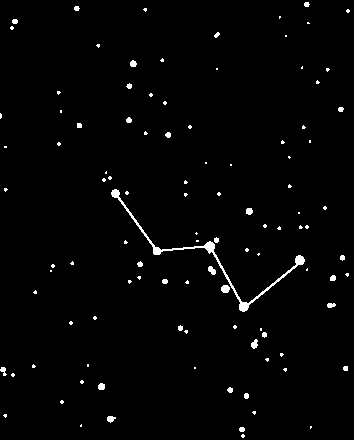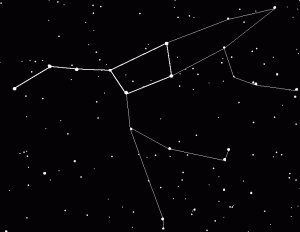Posts Tagged ‘perseids’
Perseids 2013
Last night I spent about 40 minutes outside meteor spotting. Luckily it was the first night in ages that there was a mostly clear sky, apart from the occasional wispy clouds that passed overhead. It was good timing as last night was the peak of the Perseid Meteor shower of 2013 although you can still see meteors up until the 24th August when the Earth passes out of the meteor hot spot.
It took a while to spot anything but in the end I managed to see 8 meteors, 4 satellites, the International Space Station (ISS – which was a nice surprise!) and a strange looking triangle shaped Plane with weird flashing lights (aliens? 😉 ). The most interesting thing of all was that I also saw a bright flash in the sky and then it gradually faded away. I think it must have been a larger meteor hitting the atmosphere and exploding or something but it seemed to be heading in the wrong direction for the meteor shower, which made it more strange. It would be interesting to know if anyone else saw this last night? It must have been about 23:20 when I saw this. Please leave a comment on this post if you did see that last night as well!
As mentioned above, if you missed the meteor show last night, then you can still see them up until near the end of the month. If you can find the constellations of Cassiopeia and The Plough (Ursa Major), then kind of look between and above them and this is the general area where the meteors shoot across the sky. There were some really good ones and a couple of years ago I saw the best meteor I have ever seen towards the end of August, so it is definitely possible to see them for a few weeks yet!
Leonid Meteor Shower
I was out on November 3rd at a Fireworks show in Trispen in Cornwall and whilst I was waiting for the Fireworks to start I was having a good look at the Sky. It was clear as a bell and a very cold evening, so the Stars were shining brilliantly. To my amazement, I saw a really bright and big shooting star followed by another, and another, and another and another. I think I saw a total of 6 or 7 in the end and they were all really clear to view, and were flying across the Sky right above us! It was an amazing sight as I wasn’t expecting to see a Meteor show as well!
A few days later I looked up whether there were any Meteor showers taking place around this time and found that the Meteors must have been from the Leonids which is a Meteor shower that happens throughout November every year. The best days to view them this year were on the 17th and 20th of November, so I was very lucky to see as many as I did in only about 45 minutes of viewing, a good couple of weeks before the height of the shower.
The Leonids are said to be a lot better quality than the Perseids in August as they are much brighter and about 10mm in diameter, and this was certainly true from my observations. The Perseids paled in comparison to the Leonids. These Meteors originate from a Comet named Tempel-Tuttle, which was discovered in 1865 by Ernst Tempel, and radiate from the constellation Leo (hence their name).
Remember to keep an eye out for them next year as they are a great sight to behold!
Perseid Meteor Shower 2011
The Perseid Meteor Shower (the ‘Perseids’) will reach its peak activity on Saturday 13th August this year. Unfortunately, this coincides with a full moon this year which will make the sky so bright that only the closest and largest meteors will be seen. But don’t ignore it for this year, as it will still be possible to view them!
The Perseids originate from the constellation Perseus, but actually have nothing to do with any of the stars in the constellation. They are actually rock fragments left over from the comet Swift-Tuttle when it last flew near the Sun. So if you can find the constellation of Perseus in the night sky, you will know where to look for the meteors streaking across the sky. However, don’t just look at the constellation, look at the area around it as you will still be able to see them as they only originate from Perseus.
Let’s hope for a clear sky and good viewing to everyone!

